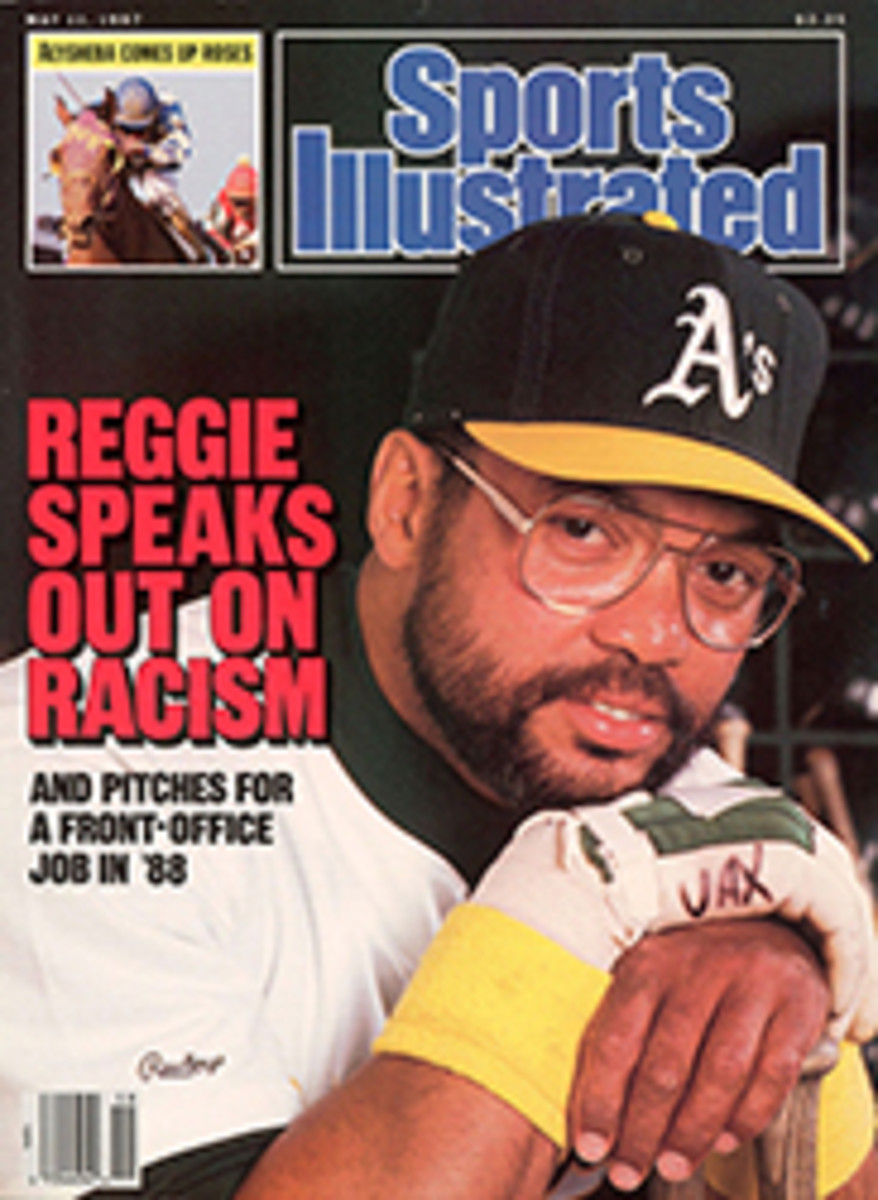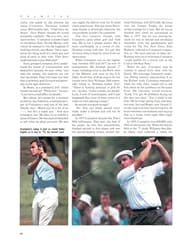
AFTER 30 HIGH-FLYING YEARS, THE FRISBEE STILL SOARS
The Space Age officially began with the launch of the Sputnik I on Oct. 4, 1957. But if you ask me, the Space Age began earlier that year—around Jan. 13—when the Wham-O Manufacturing Co. of San Gabriel, Calif., launched a product it would come to call the Frisbee.
The Frisbee—that enduring symbol of the counterculture—is 30 years old? Yes, it has been three decades, and Wham-O's sales have topped 100 million. Because it's hard to imagine a world without the beauty and grace of the flying disc, this is a good time to remember how the Frisbee came about.
The name, for starters. You might think it was an onomatopoeia of the sound a Frisbee makes as it moves through the air, but the name has been attributed for years to the Frisbie Pie Company of Bridgeport, Conn., which went out of business in 1958. However, Rich Knerr, one of the former owners of Wham-O, says he named the disc after a newspaper cartoon character named Mr. Frisbie. As far back as the 1870s, Yale students liked to hurl empty pie tins and shout "Frisbie!" the way golfers shout "fore!"
The idea for the plastic disc as we know it occurred to two great minds at about the same time. One belonged to Ernest C. (Bill) Robes of Etna, N.H. He understood the physics of flight because he had been one of the country's first acrobatic ski jumpers; he was a skilled furniture maker; and innovation was in his genes because his father, Bill, had developed technology for the two-party telephone line.
At first Robes molded various plastics in the shape of a tin can lid. Then he tried using wooden molds and also had some success heating a plastic called Boltaron on the kitchen stove, shaping it over his washing machine agitator and trimming off the excess. "It was quite a little operation," he says proudly.
In the late 1950s, Robes named his creation the Space Saucer and switched to an injection molding process, which kicked out a disc every 29 seconds. For two years he peddled his saucer to Dartmouth students for about 50 cents—with rules enclosed for the prototype of Guts, in which two teams take turns hurling a disc at each other. As the game spread to other campuses and the Space Saucer became a hot item in college co-ops, Robes tried to sell his idea to a major manufacturer.
"Parker Brothers was one of the first we contacted," says Robes today. "They were very interested—on their terms. The president was so arrogant that after a while I was so disgusted I wasn't hearing what he said." Robes told his lawyer how to answer their offer: "Tell them to go to hell. I'd rather throw it in the river first." A Parker Brothers spokesman said he couldn't verify the incident.
Robes talked to other companies, but nothing worked out. "The saddest experience involved a manufacturer in Bergenfield, N.J. I went down there and was pushed up to cloud nine. The man I spoke with wanted to feature the Space Saucer in his spring catalog. But first he had to check with his boss." The boss turned Robes down.
This was a critical moment, however, because another inventor's son was developing his own flying discs on the other side of the country. At the time, Walter Fredrick Morrison was a 28-year-old building inspector in Los Angeles. Like Robes, he was a skilled woodworker, and he loved flight (he had been a pilot in World War II). In 1948, Morrison made a plastic disc on a lathe. A few years later he turned to plastic injection molding and formed a company called Pipco to issue the Flyin' Saucer. He even paid Al Capp $5,000 to put a drawing of Li'l Abner on the saucer's face.
Two years later Morrison developed a disc he called the Pluto Platter, which carried the names of the planets. He hawked it at fairs, in parks and on beaches with all the flair of PT. Barnum. At the Pomona fair in Los Angeles he pretended that the disc was connected to an invisible wire. "Feeling kind of stupid, we started walking through the crowd and yelled, 'Watch out for the wire!' And people started looking out!" A path was cleared, the Pluto Platter was demonstrated, and Morrison sold the fairgoers the invisible wire for a buck and threw in the platter for free. "Sales were pretty good," says Morrison. "Maybe because we were right across from the beer tent."
One day in 1956, Morrison says, he was demonstrating his Pluto Platters in a parking lot when he was approached by representatives of entrepreneurs Rich Knerr and A.K. (Spud) Melin. A few years earlier Knerr and Melin had teamed up and made a fair penny on a slingshot. When fired correctly, it made a sound something like "whammo," which seemed as good a name as any for their company. They would later market the Hula Hoop and the Super Ball, but at that moment they saw endless possibilities in Morrison's saucer. Knerr and Melin invited Morrison to seal the deal at their plant in San Gabriel. In 1957, Wham-O launched the Pluto Platter, which was soon retooled and rechristened the Frisbee.
Robes's disc, meanwhile, wasn't doing as well. In retrospect, the Parker Brothers' offer hadn't been so bad. "We were to get three cents, four cents apiece for each saucer up to a certain amount," says Robes. "Then it would cut down to two cents. It didn't sound like much. But I read in the papers this fella Morrison took in $500,000 just in royalties. So you can see that two cents apiece could have been quite a lot."
When he began to hear about the West Coast disc, Robes assumed Morrison had stolen his idea, but because he had received the earlier patent, he thought he was protected. Unfortunately his patent claims were too narrow, covering only a precise disc constructed in a very specific way—including support flanges that Morrison's disc never had. "With broader claims and without the need for flanges," says Rory Radding, a partner with the patent-law firm of Pennie & Edmonds in New York, "Robes might have covered the Frisbee." When Robes ceased production in 1962, he had sold 65,000 Space Saucers and had plenty left over.
As sales of the Frisbee took off, Morrison used his money to buy planes, which he piloted. He also owned a hardware store and operated a small airport. Now, at 67, he runs a motel in Richfield, Utah, with his third wife.
Robes also ended up with his own business, the Moose Mountain Pine Custom Furniture business of Etna, N.H. Now 76 and retired, he is married and living in Etna. He was recently elected to the National Ski Hall of Fame as a pioneer in American ski jumping.
Despite all they have in common, the two inventors have never met. Asked what he might tell Morrison if they ever did, Robes replies, "It wouldn't be what I'd tell him, it'd be what I'd show him: my big fist!" Then Robes chuckles, "No, no. He was right in what he did."
Like a lot of 30-year-olds, Frisbees are part of the establishment now. Wham-O—like the owners of such brand names as Xerox, Kleenex and Zamboni—spends much time protecting its product's trademark. It's the price of success. But a benefit of success is all the people playing Guts, Disc Golf, Ultimate, Freestyle and the irresistible Catch & Fetch (with dogs) in organized competitions. This June in La Mirada, Calif., Wham-O will stage a tournament with 260 Frisbee jocks competing for $40,000 in prize money. The event is called the U.S. Open Flying Disc Championships, and for the first time in the tournament's 14-year history Wham-O will allow any flying disc of reasonable design to be used. Who knows, maybe one of Bill Robes's Space Saucers will finally have its day in the sun.
PHOTO
COURTESY WHAM-O
Morrison cut an otherworldly image while promoting the Wham-O disc in the 1950s.
PHOTO
STUART BRATESMAN
Robes's Space Saucers never quite caught on.
PHOTO
STUART BRATESMAN
Robes's patent couldn't ground the Frisbee.
Mark Danna of Flying Disc Enterprises has won three national Frisbee titles.

